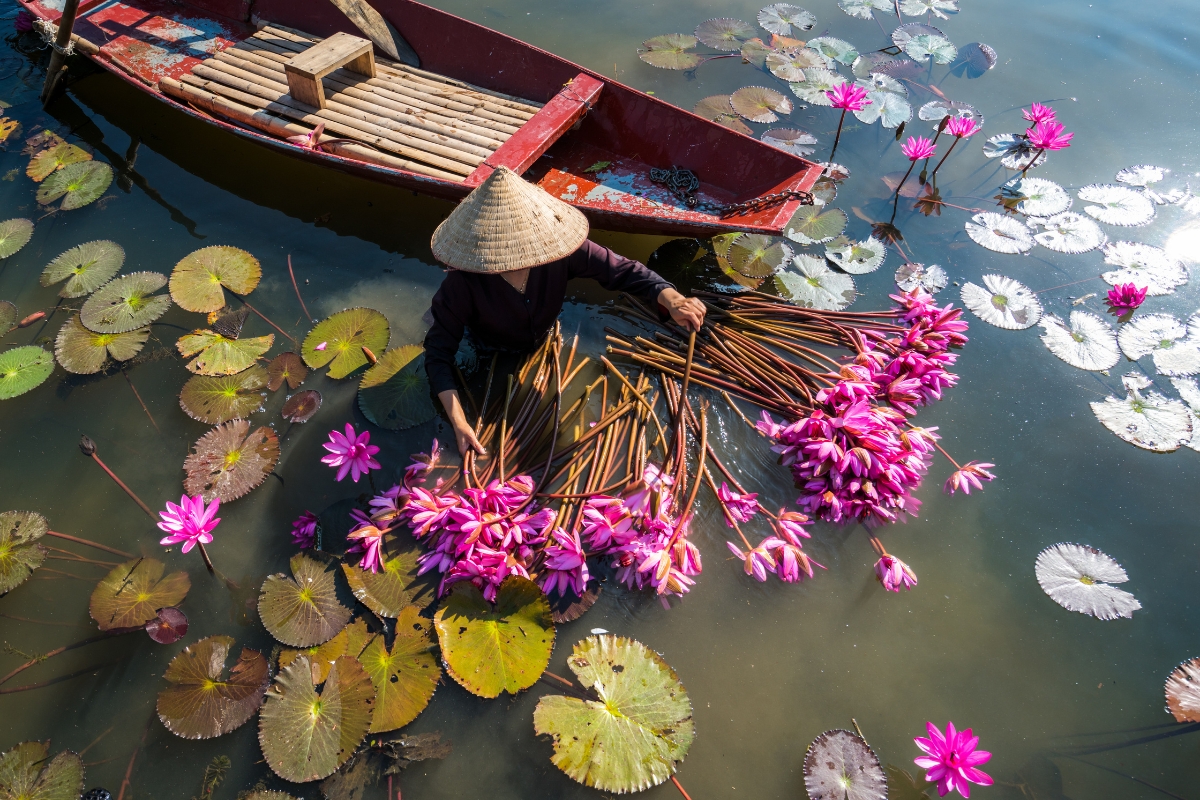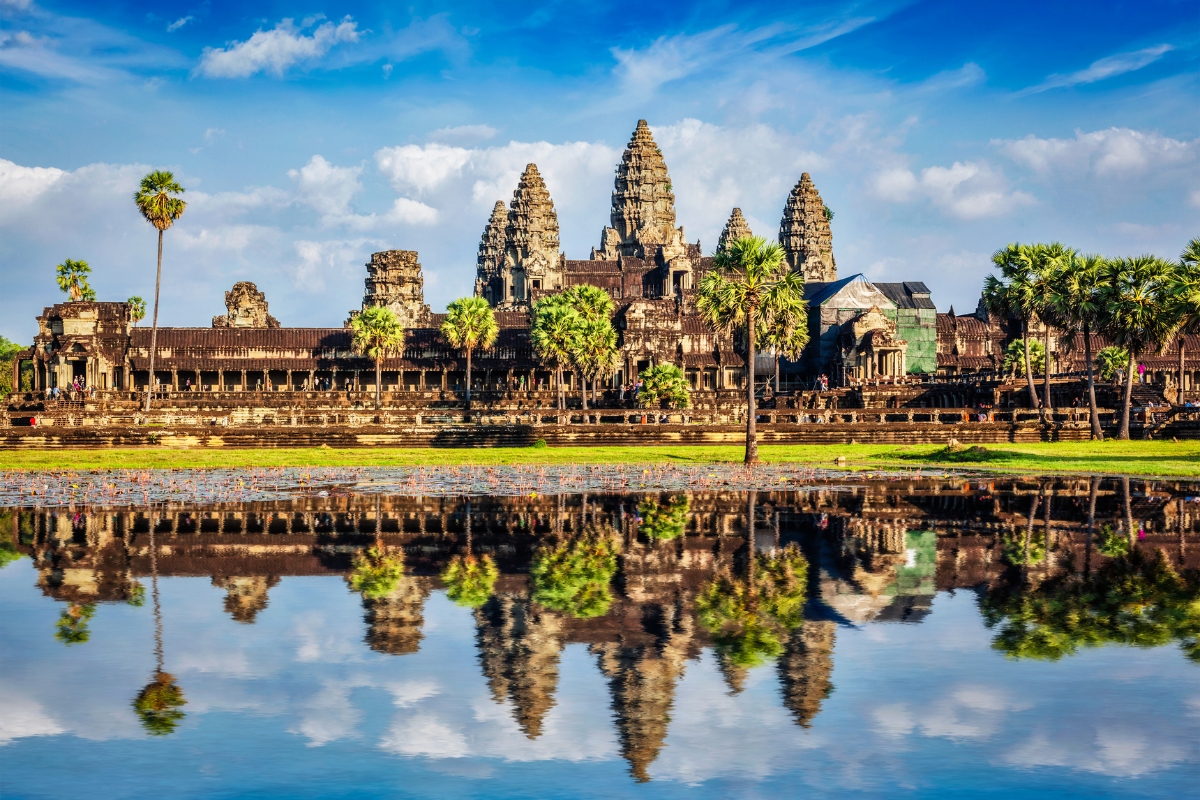TABLE OF CONTENT
Are you wondering when is the best month to visit Vietnam and Cambodia? These Southeast Asian gems offer incredible experiences year-round, but understanding their distinct weather patterns and seasonal highlights is crucial for planning the perfect journey. In this comprehensive guide, we’ll explore the ideal times to visit both countries and help you make an informed decision for your adventure.
What is the Weather in Vietnam?
Vietnam’s weather is particularly complex due to its long, stretched geography and varied topography. The country experiences different weather patterns from north to south:
Northern Vietnam (Hanoi, Halong Bay, Sapa):
Winter (December-February)
- Temperatures: 15-20°C (59-68°F)
- Cool, dry conditions
- Occasional drizzle
- Perfect for trekking and city exploration
Summer (June-August)
- Temperatures: 30-35°C (86-95°F)
- Hot and humid
- Frequent afternoon thunderstorms
- Peak rainfall in July-August
Central Vietnam (Hoi An, Hue, Da Nang):
Dry Season (January-August)
- Temperatures: 25-32°C (77-90°F)
- Hot and dry conditions
- Best beach weather
- Perfect for cultural exploration
Wet Season (September-December)
- Heavy rainfall
- Potential flooding
- Typhoon risk
- Some attractions may be limited
Southern Vietnam (Ho Chi Minh City, Mekong Delta):
Dry Season (December-April)
- Temperatures: 25-35°C (77-95°F)
- Low humidity
- Minimal rainfall
- Ideal for city tours and delta cruises
Wet Season (May-November)
- Brief but intense afternoon showers
- High humidity
- Lower tourist numbers
- Lush, green landscapes
Traveler Highlights:
- Best beach weather: February-August (Central)
- Best trekking conditions: October-March (North)
- Most comfortable city exploration: December-February
- Best photography conditions: October-March
- Mekong Delta exploration: December-April

For more details, please read our Blog: When is the best time to go to Vietnam for weather?
What is the Weather in Cambodia?
Cambodia has a more straightforward weather pattern than Vietnam, with two distinct seasons:
Dry Season (November-April):
Cool Season (November-February)
- Temperatures: 25-30°C (77-86°F)
- Low humidity
- Minimal rainfall
- Perfect for temple exploration
Hot Season (March-April)
- Temperatures: 33-35°C (91-95°F)
- Very dry conditions
- Clear skies
- Challenging midday heat
Wet Season (May-October):
Early Wet Season (May-July)
- Afternoon showers
- Green landscapes
- Lower tourist numbers
- Moderate temperatures
Peak Wet Season (August-October)
- Heavy rainfall
- Potential flooding
- Lush countryside
- Challenging rural travel
Regional Weather Patterns:
Coastal Areas (Sihanoukville, Kep)
- Best beach conditions: November-April
- Clearest waters: December-February
- Storm risk: July-September
Angkor Region (Siem Reap)
- Most comfortable: December-February
- Most challenging: April (extreme heat)
- Most photogenic: June-September (green surroundings)
Traveler Highlights:
- Temple exploration: November-February
- Beach visits: November-April
- Photography: Early morning hours year-round
- Cultural festivals: November-April
- Rural exploration: December-February

Which is the Best Month to Visit Vietnam and Cambodia?
After consider the factors like weather, festivals and events in both countries, we can easily see that November to February is the top choice for the best month to visit Vietnam and Cambodia:
- Climate: Perfect weather conditions in both countries
- Major festivals and cultural events: This time is the festive season in both country
- Comfortable temperatures: With the temperature around 20℃-25℃ and minimum rainfall
- Ideal for all activities
Second Best: March-April
- Good conditions despite increasing heat
- Lower tourist numbers
- Better pricing
- Clear skies
- Beach-friendly weather
Specific Monthly Recommendations:
- November: Perfect balance of weather and crowds
- December: Ideal weather, festive atmosphere
- January: Cool temperatures, clear skies
- February: Perfect for beaches and cultural exploration

Here is the table of peak season and off-peak season for you to choose the best time to visit Vietnam and Cambodia:
| Season | Vietnam | Cambodia |
| Peak Season | Between November and April | Between November and February |
| Off-peak Season | From May to October | From March to October |
Extra Tips for Choosing the Best Month
Activity-Based Timing:
- Temple exploration: Early morning or late afternoon
- Beach activities: February-April
- Cultural festivals: November-February
- Photography: October-March
- Trekking: November-March
Budget Considerations:
- Peak season: November-February (higher prices)
- Shoulder season: March-April (better deals)
- Low season: May-October (best prices)
Booking Tips:
- Book 3-4 months ahead for peak season
- Consider weather insurance for shoulder seasons
- Look for early bird discounts in low season
Regional Combinations:
- Northern Vietnam + Cambodia: November-February
- Southern Vietnam + Cambodia: December-April
- Beach destinations: February-April
While Vietnam and Cambodia can be visited year-round, the period from November to February offers the most favorable conditions for exploring both countries. This timing provides comfortable temperatures, minimal rainfall, and the chance to experience major cultural festivals. However, each season brings its own unique charm and advantages.
For the best experience, consider your priorities – whether they’re cultural immersion, outdoor activities, or budget travel – and plan accordingly. Remember that weather patterns can vary, and being flexible with your itinerary is key to enjoying these fascinating destinations.
Remember to book well in advance if traveling during peak season (November-February), and always be prepared for occasional weather changes. Whether you choose the perfect weather of the peak season or the quieter atmosphere of the shoulder season, both Vietnam and Cambodia offer unforgettable experiences that will make your journey worthwhile.
>> Explore more: Vietnam Travel Guide – What To Know Before Your Journeytime to travel to vietnam and cambodia



